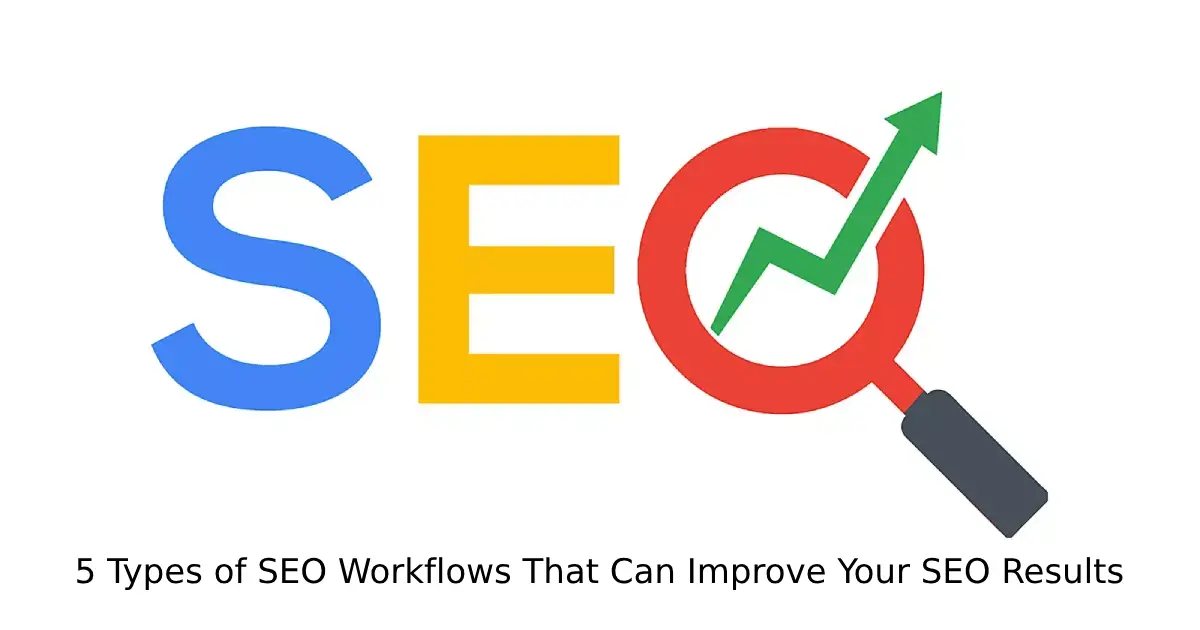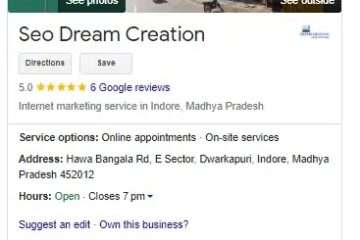Search engine optimization (SEO) is an ongoing process that is crucial to improving your website’s search engine rankings. While the basics of SEO may be the same, adopting the right workflow can make your SEO strategy more effective. Here are five types of SEO workflows that can help you improve your SEO results:
Keyword Research Workflow: A Systematic Approach to Success in SEO
Keyword research is the most fundamental process of SEO. Choosing the right keywords is essential to increasing your website traffic, reaching the target audience, and improving search engine rankings. Here is a structured keyword research workflow that will help you find the right keywords and use them effectively:
1. Goal Setting and Objective Identification
Before you begin keyword research, it is important that you clearly understand the goals of your website or business:
Target Audience: Who is your target audience? What are their interests and search behaviors?
Purpose: Why are you doing keyword research? To increase traffic to your website, lead generation, or increase sales?
Initial keyword ideas
Get initial keyword ideas based on the main topics and services of your website or business:
Brainstorming: Make a list of words and phrases that relate to your business, products, or services.
Competitor analysis: Visit your competitors’ websites to see what keywords they are targeting.
3. Using keyword research tools
Expand your initial ideas and analyze keyword quality using keyword research tools:
Google Keyword Planner: Google’s free tool that provides search volume, competition, and keyword suggestions.
Ahrefs: This tool provides detailed data on keyword difficulty, search volume, and related keywords.
SEMrush: Useful for keyword research as well as SEO audits and competitor analysis.
4. Keyword Analysis and Selection
Now you can choose the best keywords by analyzing the keyword data obtained:
Search volume: This shows how often a keyword is searched for. Keywords with high search volume can bring more traffic.
Competition: Understand the competition of the keyword. Keywords with high competition can be difficult to rank on.
Keyword Difficulty: With this metric, you can know how difficult it is to rank for a keyword.
5. Prioritizing Keywords
Prioritize the best keywords from the list of all collected keywords:
Relevance: Make sure the keywords match your content and goals.
Long-tail Keywords: These are more specific and usually offer less competition and higher conversion rates.
Trend and Seasonal Keywords: Analyze which keywords are related to current trends or seasonal events.
6. Keyword testing and monitoring
Once you have implemented keywords into your content and strategies, track their effectiveness:
Rank tracking: See how your chosen keywords are ranking.
Web analytics: Use tools like Google Analytics so you can monitor traffic, bounce rates, and other important metrics.
Adjustments: If a keyword is not working well, tweak your strategy or consider new keywords.
7. Constant updates and adjustments
Keyword research is a continuous process. Regularly update your keyword set and discover new opportunities:
Latest trends: Adjust your keyword strategy to keep up with industry changes and trends.
Keyword shifts: Consider new keywords when new content or features are added to your website.
Thus, by adopting a systematic keyword research workflow, you can make your SEO strategy more effective and get better results. Proper keyword selection is crucial to improving your website’s search engine rankings and reaching the targeted audience.
On-page SEO Workflow: Steps to Optimize Your Website for Search Engines
On-page SEO is the process in which each page of your website is optimized to improve search engine and user experience. The purpose of this workflow is to improve your website’s visibility and ranking. Here is a systematic on-page SEO workflow that will help you improve your website’s search engine rankings and user experience:
1. Identify the right keywords
On-page SEO starts with selecting the right keywords. This ensures that your website is optimized for the words and phrases people are searching for.
Keyword research: Use tools like Google Keyword Planner, Ahrefs, or SEMrush.
Long-tail keywords: Choose keywords that are specific and have low competition.
Keyword selection: Choose keywords that are relevant to your content and goals.
2. Title tag and meta description
Title tags and meta descriptions affect your page’s recognition and click-through rate.
Title tag: Write a unique and keyword-rich title tag for every page. It should be between 50-60 characters.
Meta description: Write a catchy and write a short meta description that summarizes the content of the page. It should be between 150-160 characters.
3. Heading tags (H1, H2, H3, etc.)
Heading tags clarify the structure of the page and help search engines understand the important points of the content.
H1 tag: Use the H1 tag as the main title of the page. It should appear only once on the page and contain keywords.
H2, H3 tags: Use H2, H3 tags for subheadings and short headings. This helps organize the content and makes it easier for scanning.
4. Content optimization
The quality of the content and its keyword usefulness are important.
Keyword integration: Incorporate keywords into the content in a natural manner. Avoid excessive use of keywords (keyword stuffing).
User-friendly content: Make sure your content is readable and valuable to the user. Use short paragraphs, bullet points, and subheadings.
Interlinking: Include links to other pages of your website. This helps the user to get more information and also contributes to SEO.
5. Image Optimization
Image optimization affects the loading speed of your website and helps search engines understand images correctly.
File Name: Keep image file names keyword-related.
Alt Text: Add descriptive and keyword-rich alt text to images. This tells search engines what the image is and is also helpful for screen reader users.
File Size: Reduce the file size of images so that the page loading speed is not affected.
6. URL Structure
A clear and keyword-rich URL structure is beneficial for your website’s SEO.
URL Conciseness: Keep URLs concise and clear. Avoid long and complex URL structures.
Keyword Integration: Include keywords in the URL, but make it natural and readable.
7. Mobile-friendly design
A mobile-friendly website is important for both user experience and SEO.
Responsive design: Make sure your website works properly on different devices and screen sizes.
Mobile-friendly test: Check your website’s mobile friendliness using Google’s Mobile-Friendly Test tool.
8. Site speed
The loading speed of a site impacts both SEO and user experience.
Speed test: Check site speed using tools like Google PageSpeed Insights or GTmetrix.
Speed optimization: Reduce image sizes, use caching plugins, and use a CDN (Content Delivery Network).
9. Structured data (Schema Markup)
Structured data helps search engines understand your website content better.
Schema markup: Apply schema markup according to the type of your content, such as reviews, products, or events.
JSON-LD: This is a common format of schema markup that helps search engines understand your website’s data.
10. Monitoring and Adjustments
On-page SEO is a continuous process that requires regular monitoring and adjustments.
SEO Audit: Regularly conduct an SEO audit of your website to identify any issues.
Data Analysis: Analyze your website’s performance using tools like Google Analytics and Google Search Console.
Adjustments: Make necessary improvements based on the data and results.
By adopting this on-page SEO workflow, you can optimize your website for search engines, which can improve your website’s visibility, traffic, and user experience. Constant monitoring and updates will ensure that your SEO strategy remains effective and current.
Link Building Workflow
Link building is an important part of SEO, which aims to increase your website’s search engine rankings. Here’s a suggested effective link-building workflow:
1. Goal Setting and Planning
Set Goals: What link-building goals do you want to accomplish for your website (e.g. more traffic, better rankings, brand awareness)?
Target Keywords: Identify the keywords you want to build links for.
2. Profile and Content Analysis
Website Audit: Review your website’s existing link profile and content.
Competitive Analysis: Examine your competitors’ link-building strategies.
3. Link Building Strategies
Content Marketing: Produce high-quality blog posts, infographics, and guides that can attract links.
Guest Posting: Write guest posts on blogs related to your industry and get links.
Broken Link Building: Find broken links on other sites and offer your website’s link to their content.
Networking and Connecting: Connect with industry influencers and bloggers and seek out link-building opportunities.
4. Link reception and tracking
Link reception: After receiving links, make sure they are implemented correctly.
Link tracking: Track received links and analyze their effectiveness.
5. Analysis and adjustment
Performance monitoring: Monitor the results of link building (e.g.: ranking improvement, traffic increase).
Strategy adjustment: Adjust your link-building strategy based on the data.
Note: Link building is an ongoing process, and this process is a continuous process. Results improve over time. Prioritize quality over quantity and make sure all links are natural and relevant.
Technical SEO Workflow
Technical SEO is an important part of improving the technical aspects of your website so that search engines can crawl and index your site correctly. Here is a suggested effective technical SEO workflow:
1. Website Audit
Full website audit: Identify technical website issues using SEO tools (e.g., Google Search Console, Screaming Frog, Ahrefs).
Crawling and indexing: Make sure search engines can crawl and index your site correctly.
2. Site architecture and navigation
URL structure: Make URLs clean, consistent, and keyword-rich.
Sitemap: Create an XML sitemap and submit it to Google Search Console.
Robots.txt: Make sure important pages and resources are not blocked with a robots.txt file.
3. On-page SEO
Meta Tags: Ensure correct meta titles and descriptions for pages.
Headings: Use H1, H2, H3, etc. appropriately in page content.
Image Optimization: Optimize image file names, ALT tags, and sizes.
4. Mobile Friendliness
Mobile Responsive Design: Make sure your site looks and functions correctly on mobile devices.
Mobile Page Speed: Check and improve page loading speed on mobile.
5. Page Speed Optimization
Loading Time: Measure and improve page loading speed (Google PageSpeed Insights, GTmetrix).
Caching and Minification: Minify and cache CSS, JavaScript, and HTML files.
6. HTTPS and Security
SSL Certificate: Make sure your site is running on HTTPS and has an SSL certificate installed.
Site Security: Identify and fix security flaws (e.g., bots, spam, vulnerabilities).
7. Links and Redirects
Broken Links: Identify and fix broken links on the website.
301 Redirects: Set up 301 redirects for outdated or changing URLs.
8. Data Structure and Schema
Schema Markup: Add schema markup for rich snippets (e.g., reviews, recipes).
9. Feedback and Testing
A/B Testing: Test the effectiveness of various technical improvements.
Feedback: Receive regular feedback to improve user experience and performance.
10. Regular Updates and Monitoring
Regular Audits: Regularly check the technical status of the website.
Performance Monitoring: Track website performance using Google Search Console and other SEO tools and make adjustments periodically.
Technical SEO is an ongoing process, and it’s important to update and monitor it regularly so your website always gets the best search engine rankings.
Content Marketing Workflow
Content marketing is a strategic approach that accomplishes business goals by providing valuable and relevant content to audiences. Here’s a suggested effective content marketing workflow:
1. Goal Setting and Planning
Set Goals: Clarify your content marketing objectives (e.g. brand awareness, lead generation, customer engagement).
Target Audience: Identify your target audience and understand their pain points, needs, and interests.
Content Calendar: Create a content calendar that tracks posting schedules, important dates, and campaigns.
2. Content Research and Planning
Themes and Topics: Identify content themes and topics based on trends, keyword research, and audience interests.
Content Formats: Determine which content formats (blog posts, infographics, videos, podcasts) are best suited.
3. Content Creation
Writing and Design: Work with the writing and design team to ensure content is high-quality and engaging.
SEO Optimization: Ensure content is SEO-friendly (keyword research, meta tags, on-page SEO elements).
Proofreading and Anchor Text: Proofread all content and ensure the anchor text is correct.
4. Content Distribution
Channel Selection: Publish content on platforms where your audience is active (blogs, social media, email newsletters).
Promotion: Create social media posts, email marketing, and other promotional activities to promote content.
5. Engagement and Interaction
User Feedback: Actively respond to comments, questions, and feedback.
Partnerships: Expand content reach by partnering with influencers and other brands.
6. Performance Tracking and Analysis
Analytics: Track content performance (Google Analytics, Social Media Analytics) and measure important metrics such as traffic, engagement, and conversions.
Reporting: Analyze performance data and generate reports regularly.
7. Adjustments and Improvements
Data Analysis: Make necessary improvements to the content strategy based on the analysis.
Learning: Continuously learn and adapt to know what is working and what is not.
8. Regular Reviews and Updates
Content Updates: Update old content periodically to keep it fresh and relevant.
Strategy Reviews: Regularly review your content marketing strategy and adjust it according to the latest trends and data.
Note: Content marketing is a continuous process, and it needs to be updated regularly. These workflows need to be monitored and adjusted so that you can better meet your goals and effectively engage with your audience.
By following these SEO workflows, you can improve your website’s search engine rankings and get better results. SEO is an ongoing process, so it’s important to review and update these workflows regularly.












